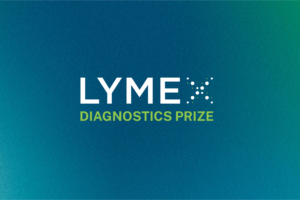Climate impacts many aspects of human health — Lyme disease is just one example.
A changing climate impacts everything — from food and weather to construction and travel. The connections between the Earth’s climate and human health are seemingly infinite: Extreme heat is causing acute kidney injury. The thawing Arctic permafrost is releasing ancient “zombie viruses.” Climate-related stress and anxiety is threatening mental health. Severe weather is disrupting access to healthcare. And vector-borne diseases — infections transmitted by vectors such as mosquitoes, ticks, and fleas — are on the rise as the geographic range of vector insects and arachnids expands.
The federal government has been leading conversations related to climate’s impact on health and health equity — and that includes tackling the growing public health threat posed by vector-borne diseases. This week, the U.S. Department of Health and Human Services released the National Public Health Strategy to Prevent and Control Vector-Borne Diseases in People. The new national strategy — a collaboration with 17 federal departments and agencies — is the first interagency effort of its kind, and HHS plans to continue accelerating patient-centered advancements through the use of strategic public-private partnerships and partner engagement.
Diseases and conditions spread by vectors include Lyme disease, Zika virus, West Nile virus, dengue, malaria, plague, Rocky Mountain spotted fever, and alpha-gal syndrome. Together, vector-borne diseases account for 17% of all infectious diseases and cause more than 700,000 deaths annually worldwide. But Lyme disease is by far the leading vector-borne disease in America.
Lyme disease is not a modern phenomenon: The Lyme disease bacterium has been present in North America for at least 60,000 years. But since 1995, reported cases have tripled as climate change increases the geographic and seasonal distribution of ticks across the United States. Ecological transformations — particularly the loss of natural deer predators — have likewise allowed infected ticks to thrive in suburban habitats.
Each year, millions of blood specimens are tested for Lyme disease in the United States. But there is no FDA-cleared test for an active Lyme disease infection, and a changing climate makes the need for diagnostic innovation even more urgent. Phase 2 winners of the LymeX Diagnostics Prize are advancing their solutions for detecting active Lyme disease infections in people.
 This week, the U.S. Department of Health and Human Services and the Steven & Alexandra Cohen Foundation announced five Phase 2 winners in the LymeX Diagnostics Prize, a competition to accelerate the development of Lyme disease diagnostics. From January to September 2023, 10 teams participated in a virtual accelerator designed to help them refine their concepts for detecting active Lyme disease infections in people. The goal of this multiphase competition, designed and managed by Luminary Labs, is to nurture the development of diagnostics toward Food and Drug Administration review.
This week, the U.S. Department of Health and Human Services and the Steven & Alexandra Cohen Foundation announced five Phase 2 winners in the LymeX Diagnostics Prize, a competition to accelerate the development of Lyme disease diagnostics. From January to September 2023, 10 teams participated in a virtual accelerator designed to help them refine their concepts for detecting active Lyme disease infections in people. The goal of this multiphase competition, designed and managed by Luminary Labs, is to nurture the development of diagnostics toward Food and Drug Administration review.
“With Lyme disease cases approaching an estimated 500,000 annually, Americans need an FDA-approved diagnostic that can accurately test for active infections,” said Rear Admiral Michael F. Iademarco, M.D., MPH, Deputy Assistant Secretary for Science and Medicine. “HHS is working with the Steven & Alexandra Cohen Foundation through the LymeX Innovation Accelerator public-private partnership to accelerate crucial innovations in industry and academia that could improve treatment and care for this debilitating disease.”
“As we congratulate our Phase 2 winners, we are also proud to support the next steps in advancing these tests toward FDA review. This award marks a major milestone in the fight against Lyme disease — and hope for so many Americans at risk of infection.” Alex Cohen, President of the Steven & Alexandra Cohen Foundation
Meet the Phase 2 winners, who will each receive $265,000:
- BlueArc Biosciences Inc. is working on a molecular diagnostic blood test for Lyme Borrelia burgdorferi s.l. using innovative polymerase chain reaction (PCR) assay that targets biomarkers for increased accuracy using standard laboratory equipment.
- Drexel University is working on a small-volume serum test using glycan biomarkers to detect active Lyme disease infection and track treatment response.
- HelixBind Inc. is working on an ultrasensitive, automated test to detect and identify active Lyme Borreliosis, direct from blood, in three hours.
- T2 Biosystems Inc. is working on a whole blood test designed to directly detect Lyme disease-causing bacteria, providing results in three to five hours with higher accuracy.
- Virginia Tech is working on a test using monoclonal antibodies in conjunction with both immuno-PCR and lateral flow to rapidly detect a unique B. burgdorferi biomarker in blood and urine.
Thanks to a $10 million pledge to the LymeX Diagnostics Prize from the Steven & Alexandra Cohen Foundation, $7 million in additional LymeX prizes are projected to be available in proposed future phases.

